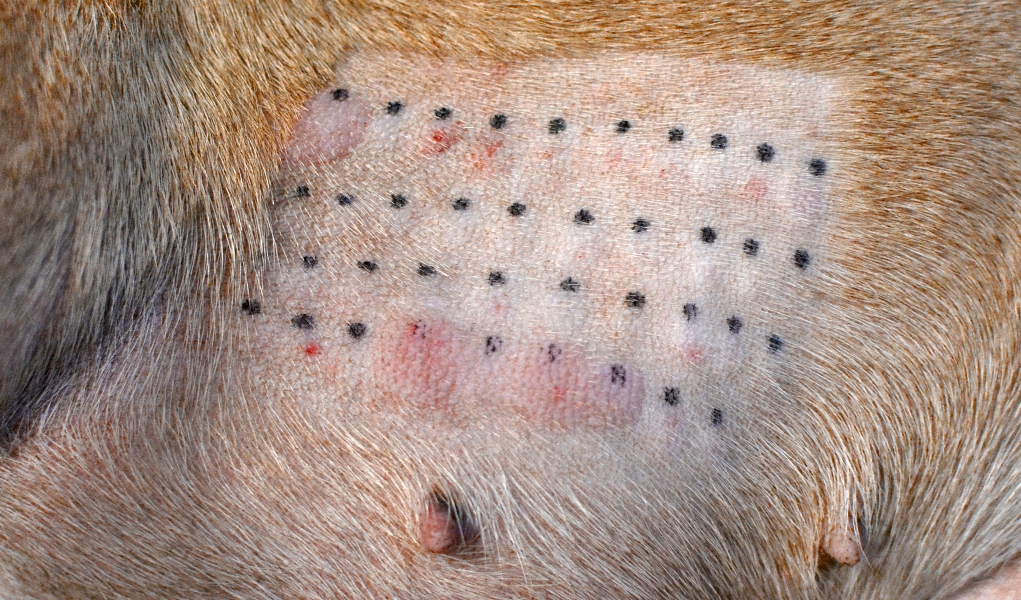Allergies are one of the most common reasons for pet owners to seek veterinary care. It's difficult to see your dog in pain or severely uncomfortable due to allergies. Dogs don't understand why they're feeling that way, and all we want to do is take away the problem. Learning how to treat dog allergies will save you a lot of stress and anxiety.
First of all, what exactly is an allergic reaction?
An allergy is a state of hypersensitivity or over-reactivity of the immune system to an allergen. Typically, allergens are proteins. The allergen protein may be of plant, insect or animal origin. Being exposed to the allergen, usually on multiple occasions, sensitizes the immune system.
Being exposed to the same or related allergen again causes an over-reaction. Under normal circumstances, the immune systems response would protect your dog from infections and disease. However, when it comes to allergies, the immune system's response can actually be harmful to your dog's body.
Each dog reacts to allergens in a different way, and the symptoms can be varied and range from mild to extreme. If your dog is experiencing symptoms such as itchy skin, coughing, sneezing, wheezing, runny eyes, runny nose, vomiting or diarrhea, seek veterinary help to diagnose the underlying problem. It could be linked to canine allergies, but there may be other causes as well.
How To Treat Dog Allergies At Home
 Finding what is causing your dog’s allergies is often a process of elimination. Digestive issues can easily point to food allergies, so changing brands may solve the problem. An elimination diet may be necessary to figure out which ingredient is causing the reaction.
Finding what is causing your dog’s allergies is often a process of elimination. Digestive issues can easily point to food allergies, so changing brands may solve the problem. An elimination diet may be necessary to figure out which ingredient is causing the reaction.
Another common cause of dog allergies is fleas. If your dog is allergic to fleas, you won't be able to treat the allergy until you get rid of the pests. Keep in mind that there may be some time after the fleas are gone when your dog has a reaction to histamines brought to the skins surface from a flea allergy.
When basic detective work doesn't resolve the problem, it may be time to consult your vet. They will probably suggest allergy testing. Allergy testing on dogs is done much the same way that it is done on humans. If you have ever had any allergy testing done yourself, you will be surprised to know that the procedure is the same.
Different allergens are numbered and injected in small amounts under the skin to determine if there is a reaction and the figure out the degree of the reaction. If the reaction is determined to be severe, then your dog has an allergy.
The next step is to determine the course of treatment, which may include allergy shots. These shots are done in office, and are made up of low concentrations of the allergen(s). They help your dog’s immune system become desensitized and less likely to react to the allergen.
If your dog has multiple allergens, then allergy shots may be the best option. However, you may be able to treat the problem with allergy meds for dogs, depending on the type of allergen your dog is allergic to and how severe the reaction.
You can certainly try to figure out what is causing your dog's allergies on your own. Unless you're very lucky, it's probably going to take a while to weed through all of the possibilities and find the cause.
If you believe that your dog is suffering with allergies, I recommend seeking veterinary care immediately. It will save you a lot of time, and your dog will get treated as soon as possible. Just remember, the longer it takes you to figure out the cause of the allergies, the longer your dog is suffering.
READ NEXT: The Best Hypoallergenic Dog Food Brands












